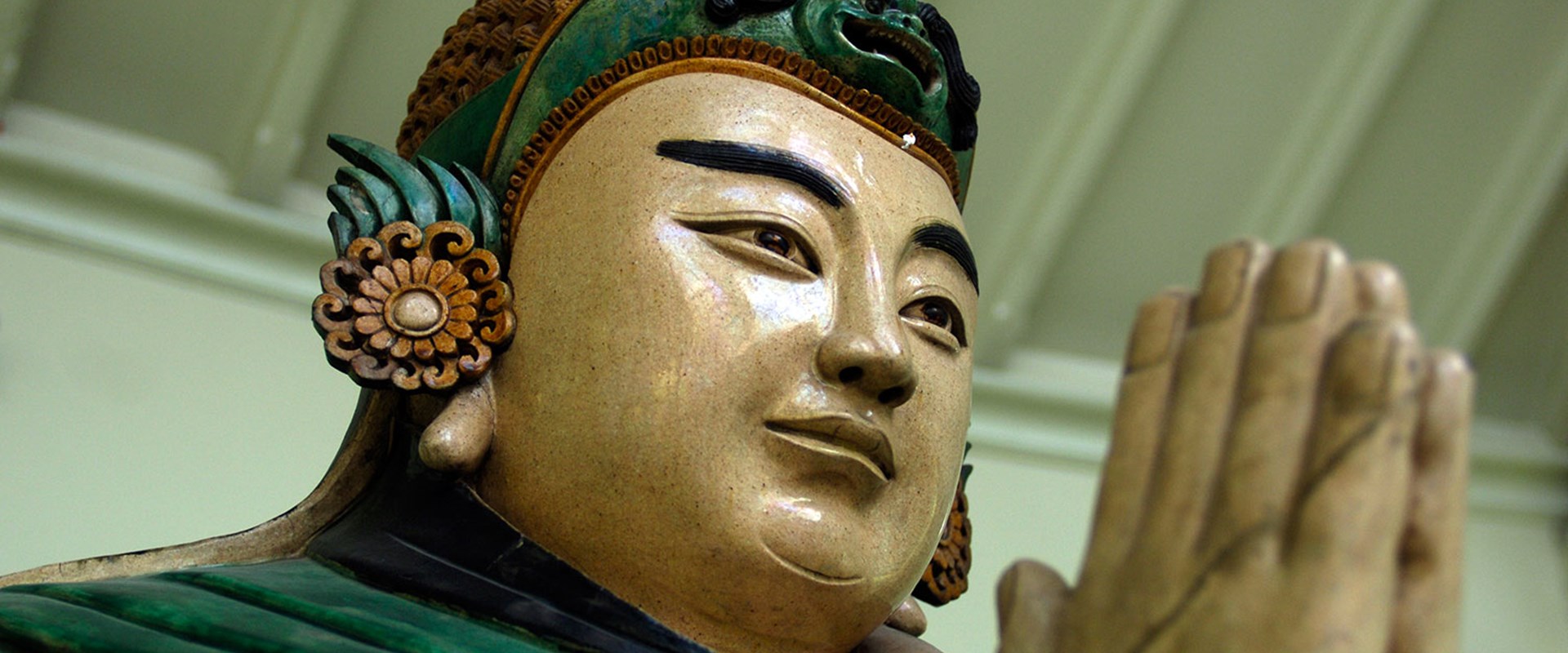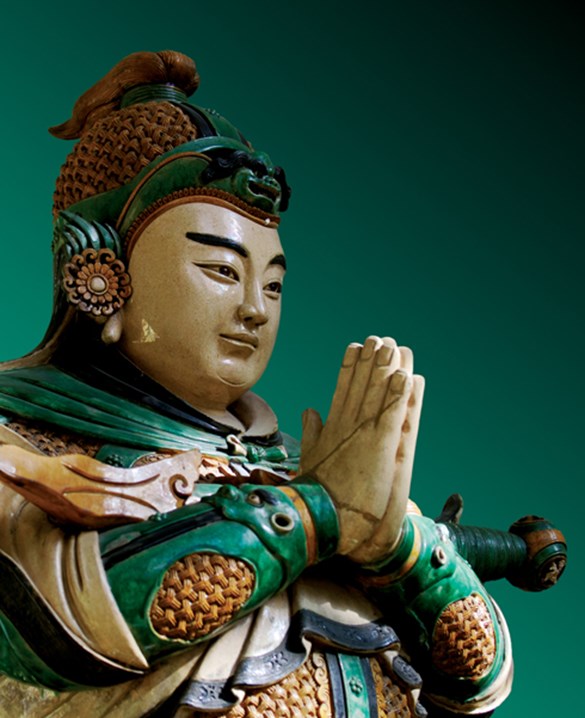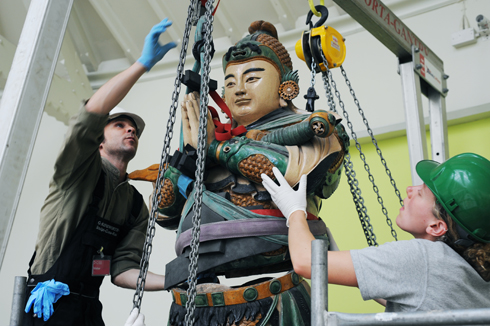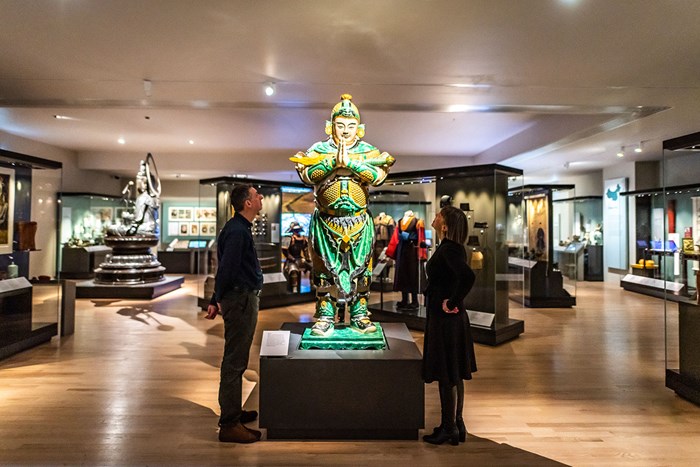Key in a search term below to search our website.
Key in a search term below to search our website.

Weituo is a significant sculpture from Henan Province, China. Large sculptures of Weituo, one of the guardians of the dharma, or Buddhist teachings, are often found in Chinese temples, and sometimes in the refectories of Chinese monasteries, where his presence is said to guarantee calm and peace.
Date
Ming dynasty (1368-1644)
Made in
Henan Province, China
Made from
Polychrome glazed stoneware
Dimensions
Height 1.9m
Weight
450kg
Museum reference
On display
Exploring East Asia, Level 5, National Museum of Scotland
Did you know?
According to the lunar calendar, Weituo’s birthday is on the 3rd day of the 6th lunar month.

The story of how the sculpture ended up in the museum so far from home is far from calm. Originally bought by a London art dealer who mistook both his age and identity, Weituo had to endure a very bumpy ride from China, inadequately packed in a crate, and arrived in London in pieces. In this sad state the sculpture was no longer of interest to the dealer, who donated him to the Museum.
After three months of careful restoration here at the museum, Weituo was finally brought back to his original splendour and put on display, although a reminder of his ordeal can be spotted if you look carefully.
Weituo is a protector figure in Chinese Buddhism. His role is to preserve Buddhist teachings and protect Buddhist monasteries. He is also a bodhisattva. The tradition of Buddhism in China believes in universal enlightenment. It recognises many spiritual beings, among them bodhisattvas, or beings that have compassionately chosen to remain on earth, guiding others towards enlightenment.
According to Buddhist traditions, Weituo fought off demons who were trying to steal the relics of the Buddha. He’s therefore represented as a general wearing a tall helmet and a full suit of gold chainmail armour secured at the waist by a belt decorated with a monster’s head. He is usually shown with a sword, here laid across his arms, and his hands meet in a gesture of greeting and respect.
You can explore the sculpture in 3D below.
In 2008, however, Weituo was on the move again, into storage this time, while redevelopment work was carried out at the museum. But weighing in at 450kg, he wasn’t going anywhere easily.
Artefact conservator Diana de Bellaigue explains:
"We knew that the sculpture was in two parts but didn’t know whether the two halves were attached and if so, how.
"Fortunately the top half is hollow and relatively light, and it lifted clear of the legs, with no hidden fixings to contend with. The legs, however, had been restored in the 1930s, when they had decided to pour cement into them, adding roughly an extra 150kg to the weight.
"With the use of the lifting beam we successfully transferred both parts to their respective crates and gingerly pallet trucked them across the squeaking floorboards of the balcony to the goods lift, breathing a sign of relief when they safely reached the National Museums Collection Centre in Granton."

Above: Weituo is hoisted into position.
From December 2012 to early 2019, Weituo was placed on Level 5, peacefully surveying the Grand Gallery of the National Museum of Scotland from the lofty heights of the balcony.
In early 2019, Weituo was on the move again, this time to the new Exploring East Asia gallery. Facing outwards to the existing World Cultures galleries, Weituo, with his joint palms, is welcoming every visitor to the gallery.

Above: Weituo in his new home, in the Exploring East Asia gallery at the National Museum of Scotland.